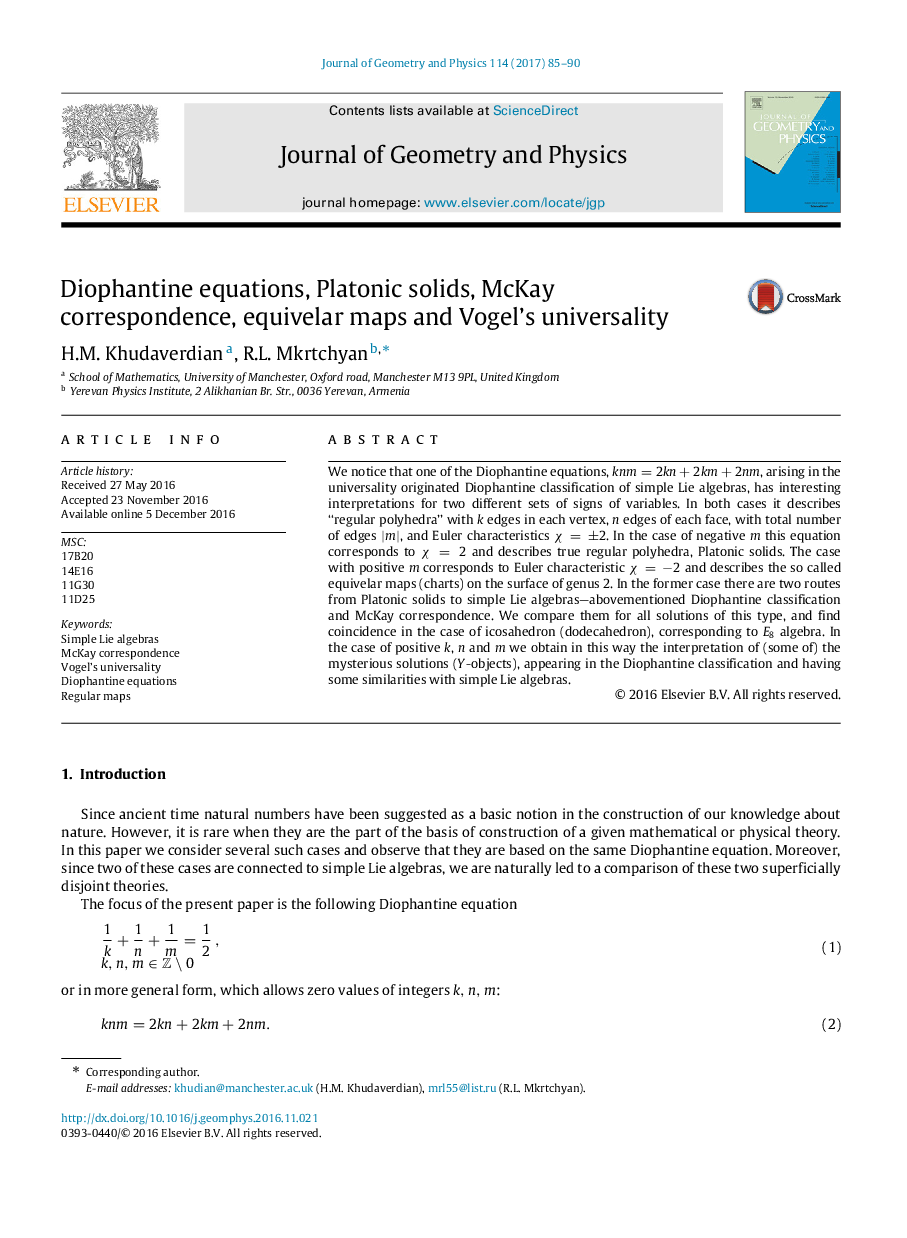| Article ID | Journal | Published Year | Pages | File Type |
|---|---|---|---|---|
| 5500078 | Journal of Geometry and Physics | 2017 | 6 Pages |
Abstract
We notice that one of the Diophantine equations, knm=2kn+2km+2nm, arising in the universality originated Diophantine classification of simple Lie algebras, has interesting interpretations for two different sets of signs of variables. In both cases it describes “regular polyhedra” with k edges in each vertex, n edges of each face, with total number of edges |m|, and Euler characteristics Ï=±2. In the case of negative m this equation corresponds to Ï=2 and describes true regular polyhedra, Platonic solids. The case with positive m corresponds to Euler characteristic Ï=â2 and describes the so called equivelar maps (charts) on the surface of genus 2. In the former case there are two routes from Platonic solids to simple Lie algebras-abovementioned Diophantine classification and McKay correspondence. We compare them for all solutions of this type, and find coincidence in the case of icosahedron (dodecahedron), corresponding to E8 algebra. In the case of positive k, n and m we obtain in this way the interpretation of (some of) the mysterious solutions (Y-objects), appearing in the Diophantine classification and having some similarities with simple Lie algebras.
Related Topics
Physical Sciences and Engineering
Mathematics
Mathematical Physics
Authors
H.M. Khudaverdian, R.L. Mkrtchyan,
